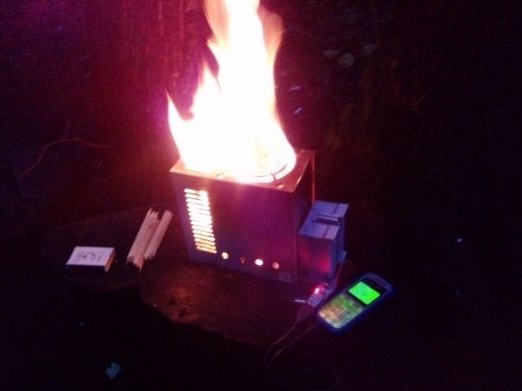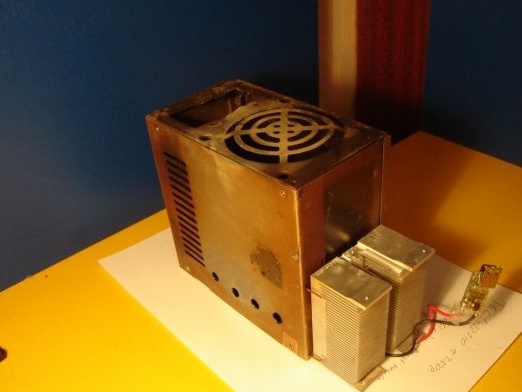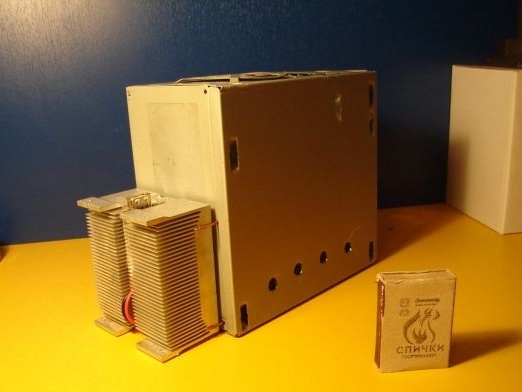
There is such an interesting thing in the world as the Peltier Element - a thermoelectric converter with a reversible effect. Its device is very simple - it is a plate with many connected pairs of dissimilar semiconductors, enclosed in a heat-conducting housing. If you let current flow through the element, one of the sides of the plate will start to heat up, and the other will cool. This also works in the opposite direction - if you cool one side and heat the other, the element will begin to generate electricity, the greater the greater the difference in temperature between the sides.
Due to their versatility, simplicity and small size, “dumplings” are warmly loved by homemade lovers, survivors and overlockers who do not cease to think of using them as a cooler (for example, for a CPU) or a thermoelectric generator. For example - presented from Ufa - a simple field-effect thermo-generator on wood and wood chips, giving an output voltage of 5V / 500mA via a converter with a USB output - this should be enough to charge a phone or a flashlight in nature. And most importantly - you can assemble this unit from computer trash and improvised tools, and below we will tell you how!
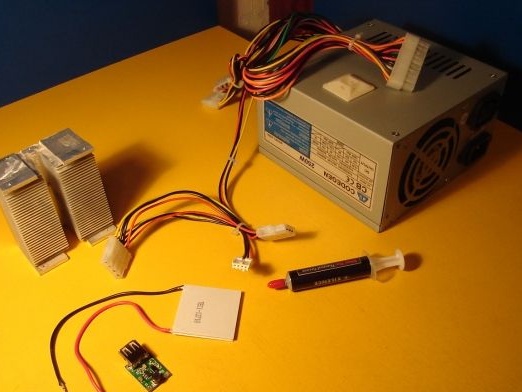
To build the device you will need:
1. Peltier Element - TEC1-12710 12V 40x40mm is a good choice
2. Step-up voltage converter with USB output (input current 1-5V, output 5V).
3. A heatsink for a processor with a contact area of at least 40x40mm (larger is better).
4. The power supply unit of the computer, preferably non-working - from it you only need a case. Instead of BP, you can use a grate, and generally modify the design as desired.
5. Thermal grease and tools.
You can buy the Peltier Element on radio markets or in electrical stores, or on ebay and aliexpress (the keyword is "peltier"). At us - more expensively, for a party of 5 pieces. TEC1-12710 will cost $ 25, although it can be found cheaper. Also, you can order TEC1-12706 - its characteristics are worse, but the party is in the same 5pcs. cost $ 10. Below are the characteristics of the element used in the generator:

The TEC1-12710 has 127 pairs of semiconductors, it is designed for 10A and the optimum supply voltage is 12V (permissible, but undesirable, an excess of 14-15V. When the voltage is extracted by heating and cooling, the element will produce a voltage significantly lower than average - about 1V with passive cooling of one side.Therefore, you need to use a boost converter - when the minimum allowable voltage of 1V is applied to the input, it increases and stabilizes it, giving a stable 5V at the output. Most of these devices are equipped with an LED indicator - when it lights up - it means there is 5V at the output and you can work.
It is not difficult to assemble the stabilizer yourself - although it costs about $ 2-3 and is sold online stores. The described device uses a stabilizer ordered from China along with a power supply.
Important: Peletier elements are sensitive to high temperatures - prolonged heating of the element above 160 ° C is undesirable, otherwise the semiconductor junctions will float and it will fail. Short circuits on the surface of the element and between the contacts are also dangerous.
Assembly:
1. First you need to prepare the PSU case. Namely, to gut the entire filling and remove the power ports. From below on the back wall where the radiator will be mounted, cut or punch 4 small holes - they are needed to mount the radiator on a metal wire. Also, if necessary, punch openings for oxygen access from below. In all other respects - the computer PSU case is ideally suited for a thermal generator.

2. Observing the polarity, solder the contacts of the transmitter to the converter, and it is desirable to insulate the converter itself, to protect it from damage.
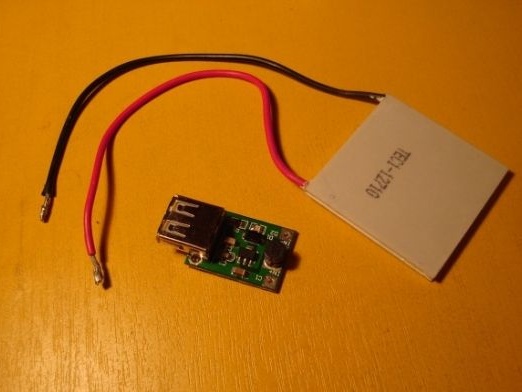
3. Now it is necessary to realize cooling of the cold side of the electric drive - active or passive. Passive is just a radiator that dissipates heat. Active is when the heat transferred to the radiator is dissipated by the cooler, or when the radiator is cooled with cold water / snow (winter is the best time for fans of EP) - there are many options. In any case, passive cooling is acceptable in windy areas, but the efficiency of the device will be lower.
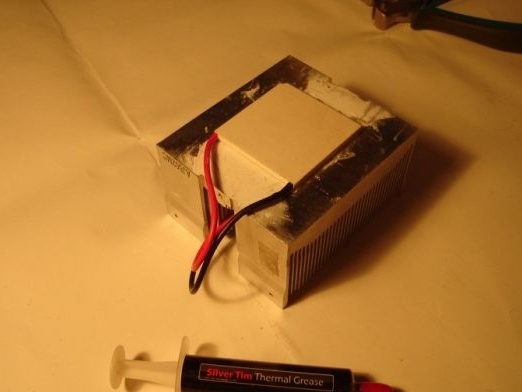
The "cold" side of the electronic circuit is the one on which the name is printed (you can test by putting current on the electronic contacts). For better heat dissipation, generously lubricate the cold side of the electronic circuit with thermal grease - the legendary KPT-8, bought on the radio market, is also suitable, but it is better to use modern analogs (ask at computer equipment stores). After - install the radiator on the cold side of the EA, and fix the finished product tightly (using a metal wire) on the wall of the housing.
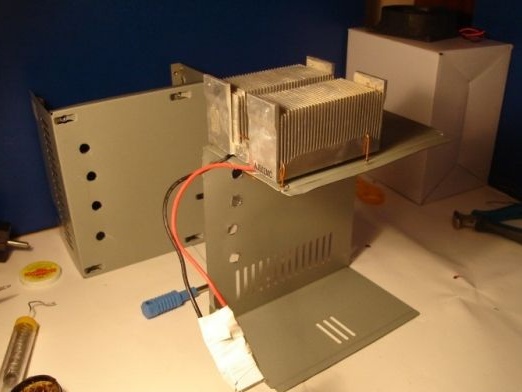
The thermogenerator on the Pelletier Elements is ready!
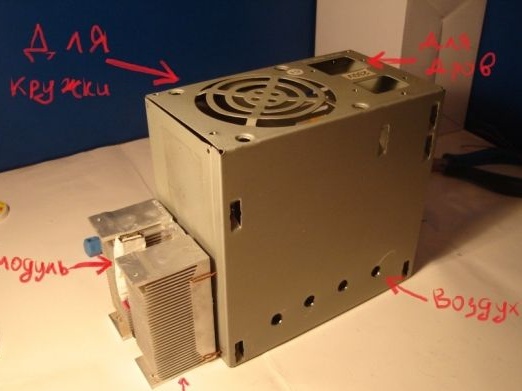
This unit works very simply: chips or firewood burning inside the case will heat one of the sides of the EA, while the other will cool the radiator. The temperature difference will begin to grow - and with it, the voltage produced by the element will also increase. When the lamp on the converter lights up, you can connect your devices to the device, and they will slowly but surely charge. And if you sometimes cool the radiator with water, then they will charge even faster!
